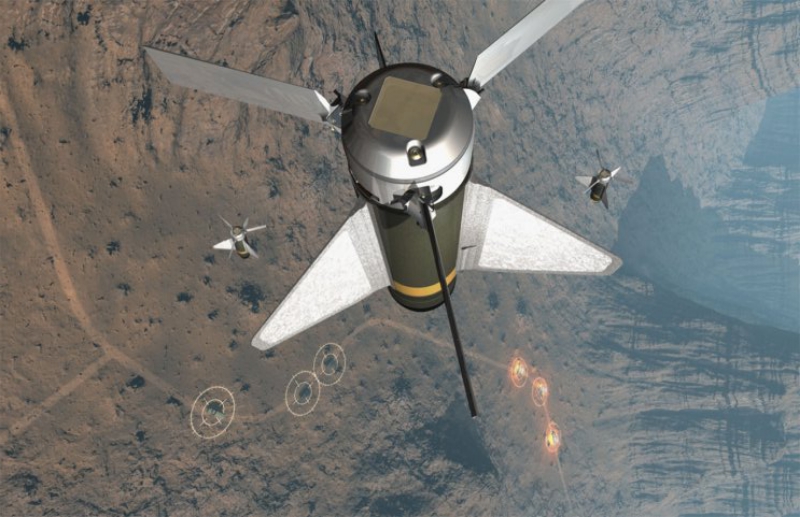Northrop Grumman has achieved a technical readiness level (TRL) 7 milestone with its Hatchet unpowered precision strike munition, following the completion of a campaign of live end-to-end guide-to-hit trials in August. The next milestone will be full platform integration.
The campaign, which was continued from the end of 2018 to allow for new range time logistics, provided for a series of multiple target live guide-to-hit engagements, a company spokesperson told Jane’s . The release platform type, target types, heights of release, range to targets, location and results of the trials campaign, were not disclose
An earlier test programme in October 2018 culminated in a full guide-to-hit release of two inert rounds against threat representative targets, both of [which] were successful, the spokesperson said. “Those trials also successfully demonstrated the release sequence, including deployment of wings and control surfaces, flight stability, and GPS guidance,” he added.
A company internal research and development (IRAD) funded initiative, Hatchet was originally unveiled in April 2012 as a low-cost gravity-dropped weapon concept to equip unmanned aircraft systems (UAS). The design has since emerged as a lightweight, low-collateral damage, precision-glide munition, optimised for UAS platforms in an armed reconnaissance role. Hatchet’s compressed carriage configuration allows for a deep magazine capacity on a single platform.
Designed for compressed carriage, Hatchet can be deployed as a single weapon against lightly protected targets or as a single strike multiple munition capability in wide area or multiple target engagements.
Hatchet features a tri-form fold-around mid-body wing and deployable aft control surfaces. The munition weighs approximately 2.72 kg (6 lb), is 60 mm (2.4 inches) in diameter, and approximately 30.1 cm (11.9 inches) long.
The initial iteration of the finalised Hatchet weapon will be equipped with global positioning system/inertial navigation system (GPS/INS) midcourse guidance and a semi-active laser (SAL) seeker for terminal guidance.
Source: Jane’s 360

